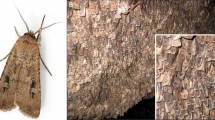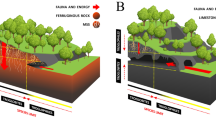Abstract
DURING the excavation of Roman remains lying beneath a car park near the Verulamium Museum, St. Albans, in the summer of 1955 some eighteen living earthworms were found among layers of blackened organic material between eight and fifteen feet below ground-level.
This is a preview of subscription content, access via your institution
Access options
Subscribe to this journal
Receive 51 print issues and online access
$199.00 per year
only $3.90 per issue
Buy this article
- Purchase on Springer Link
- Instant access to full article PDF
Prices may be subject to local taxes which are calculated during checkout
Similar content being viewed by others
References
Friend, H., Ann. Mag. Nat. Hist., 7, 137 (1911); Nature, 113, 272 (1924).
Pickford, G. E., “The Oligochaeta of Wicken Fen”, “The Natural History of Wicken Fen”, Ed. J. Stanley Gardiner (Cambridge, 1926).
Friend, H., Irish Nat., 20, 14 (1911).
Muldal, S., Proc. Zool. Soc. Lond., 122, 463 (1951).
Author information
Authors and Affiliations
Rights and permissions
About this article
Cite this article
DOBSON, R., SATCHELL, J. Eophila oculata at Verulamium: a Roman Earthworm Population?. Nature 177, 796–797 (1956). https://doi.org/10.1038/177796a0
Issue Date:
DOI: https://doi.org/10.1038/177796a0
This article is cited by
Comments
By submitting a comment you agree to abide by our Terms and Community Guidelines. If you find something abusive or that does not comply with our terms or guidelines please flag it as inappropriate.



